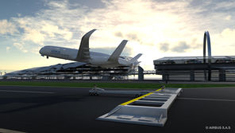 ECO-CLIMB
ECO-CLIMB
WHAT IS IT? An external catapult propulsion system that assists aircraft in taking off
HOW IT WORKS Using propelled acceleration, the renewably powered catapult system holds the aircraft in place and propels it forward. Unlike the traditional means of take-off, the aircraft does not use any power to take off, and instead relies on the catapult to move.
BENEFITS We all know that an aircraft uses the most amount of power during takeoff, with the exact amount varying due to ever-changing factors including runway length, wind speed, temperature, and the weight of the aircraft itself. The Eco-climb system would therefore significantly reduce the amount of power consumption by the aircraft.
EXPRESS SKYWAYS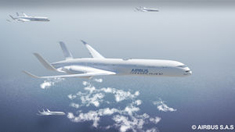
WHAT IS IT? An intuitive navigation system that would automatically select the most efficient and environmentally friendly route
HOW IT WORKS Using data about prevailing weather and atmospheric conditions, aircraft would be able to “self-organise” and select a flight path that is efficient and reduces the overall travel time.
BENEFITS Currently, flights move from one airspace into the next in circuitous, zig-zag flight patterns. This leads to increased time spent in the air, which equates to a greater chance of delay, and unnecessary fuel consumption. Having an intuitive system that provides synchronised flight paths would allow aircraft to navigate more directly and quickly, without compromising on safety.
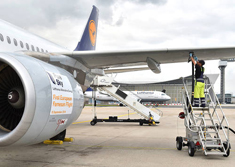 SUGAR-BASED BIOFUEL
SUGAR-BASED BIOFUEL
WHAT IS IT? This may sound a lot like one of those old cartoons featuring candy-powered rockets… but it isn’t! Lufthansa recently operated the first European scheduled flight using a sugar-based biofuel called farnesan.
HOW IT WORKS Farnesan is mixed alongside regular petroleum to power an aircraft. The bio-fuel contributes about 10 per cent of the blend, which results in improved fuel emission characteristics.
BENEFITS While Farnesan may only make up 10 per cent of the total fuel blend, this still represents a significant reduction of the use of petroleum kerosene. Every little helps!
AWWA SKY WHALE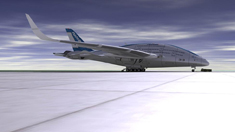
WHAT IS IT? And we thought the A380 was big! The AWWA Sky Whale is a concept that would eclipse the A380 in size. Featuring a triple deck, the giant aircraft would also feature the latest technologies available.
HOW IT WORKS According to designer Oscar Vinals, the aircraft would offer self-repairing wings, swivelling engines, and hybrid propulsion. The swivelling engines are a particular highlight as it would be capable of redirecting air flow to control laminar flow – thus reducing turbulence and drag.
BENEFITS As with the A380, the high density of the AWWA Sky Whale would mean more passengers per flight (under a full load), and therefore cheaper seats. The aircraft may be a little ahead of its time, but according to Vinals, all the technologies going in are possible.
Photo courtesy of BBC
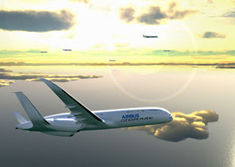 FREE-GLIDE APPROACHES AND LANDINGS
FREE-GLIDE APPROACHES AND LANDINGS
WHAT IS IT? Aircraft that have been designed to glide during descent, which would reduce the amount of emissions and noise as there wouldn't be a need for engine thrust or braking.
HOW IT WORKS Wings of the aircraft are designed to provide gliding capabilities in which the airplane descends continuously.
BENEFITS The existing landing systems require the aircraft to be levelled during descent, and this requires an increase in thrust. Extra fuel is burned and emitted. By gliding continuously to the airport, there isn’t a need for braking, meaning that fuel is saved.
Clement Huang & Tamsin Cocks








